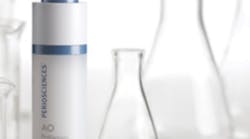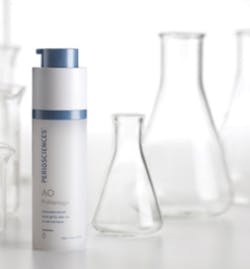Emerging indications: antioxidants for periodontal disease
Since approximately 10 to 15 percent of adults worldwide suffer from periodontitis at one time or another(1), oral health professionals are constantly challenged with treating patients for existing conditions and helping them prevent future occurrences. Root planing, scaling, and in severe cases, surgical intervention are part of the standard treatment for periodontitis, and antibiotics are used for infection control.However, in recent years, dental health professionals have honed in on the inflammation that accompanies periodontitis. Research shows that inflammation in the oral tissues—especially that associated with periodontitis—can be a factor in chronic illness such as heart and vascular disease, diabetes, arthritis, Alzheimer’s, pregnancy complications, and a growing list of other conditions. The real culprit with inflammation is oxidative stress, a disturbance in the balance of oxidants and antioxidants. Oxidative stress is the result of overproduction of free radicals, unstable molecules that attack tissue cells by “stealing” electrons from other molecules.
Although infection is a major trigger for inflammation and oxidative stress, there are numerous other causes, such as poor diet, alcohol consumption and nicotine use or chemical pollutants. In oral tissues oxidative stress can result from dental procedures and from materials used for bleaching, composite fillings, implants, crowns, veneers, and so on.
Antibiotics control the micro-organisms that contribute to periodontitis and other infection, but they do not necessarily address the free radicals and oxidative stress that accompany inflammation.
Innate defense through natural salivary antibiotics and antioxidants
The human body has an innate defense system that combats oral inflammation: saliva. Saliva contains natural antibacterial compounds that defend against bacteria and other micro-organisms. Saliva also contains natural antioxidants that have been shown to neutralize free radicals contributing to oxidative stress and inflammation.
Several recent scientific articles have explored salivary antioxidants and their role in oral health, including periodontal disease, OLP, and even cancer.(2,3,4,5) There is a growing consensus that administration of local therapeutic agents (i.e., antioxidants) to the oral cavity should be considered.(6)
Many dental health professionals have begun to augment the natural salivary antioxidants with topical application of antioxidants. A suite of products, AO ProVantage, from Dallas-based PerioSciences, LLC (www.periosciences.com), contain antioxidants, including phloretin and ferulic acid, that are applied directly to the gums. The products are distributed through professional dental offices and are best used as part of a comprehensive oral hygiene program.
1. Brown, L.J., and Loe, H. Prevalence, extent, severity and progression of periodontal disease. Periodontology 2000; 2, 57-71.2. Sculley DV, et al. Salivary antioxidants and periodontal disease status, Proceedings of the Nutrition Society 2002; 6:137-143.3. Battino M, et al. The antioxidant capacity of saliva. Journal of Clinical Periodontology 2002; 29:189-194.4. Miricescu D, et al. The antioxidant potential of saliva: Clinical significance in oral diseases. Therapeutics, Pharmacology and Clinical Toxicology 2011; 15 2:1-5.5. Gupta A, et al. Lipid peroxidation and antioxidant status in head and neck squamous cell carcinoma patients. Oxidative Medicine and Cellular Longevity, April-June 2009.6. Hershkovich O, et al. Age-related changes in salivary antioxidant profile: Possible implications for oral cancer. The Journals of Gerontology 2007; 62A 4:361-366.7. San Miguel SM, et al. Bioactive antioxidant mixtures promote proliferation and migration on human oral fibroblasts. Archives of Oral Biology 2011; doi:10.1015/jarchoralbil.2011.01.001.









